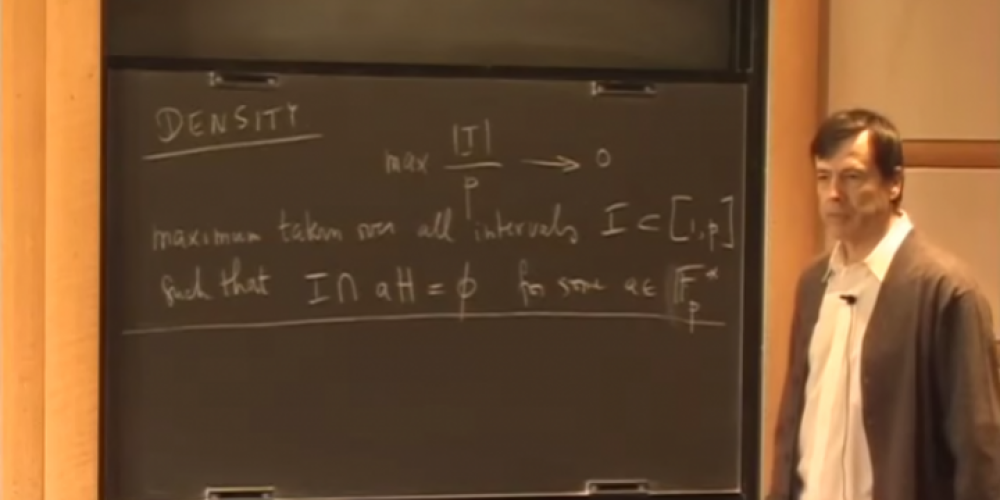
Could there be a more apt address for a top scientist than 1 Einstein Drive? If you want to write to Jean Bourgain, one of Belgium’s most distinguished mathematicians, that’s what you’ll have to put on the envelope. The address corresponds to the Institute for Advanced Study (IAS) in Princeton, New Jersey. This centre for theoretical research is a sort of Garden of Eden where the most gifted minds in science can work and live without obligations or day-to-day distractions from the real world. Albert Einstein, Kurt Gödel, John von Neumann, Robert Oppenheimer… all these great scientists spent an important part of their career here. This weekend the IAS will honour Bourgain for his work with a unique event (see below).
The IAS has been Bourgain’s home and workplace since 1994. The VUB alumnus – he received his PhD at our university in 1977 at an age of only 23 and his habilitation two years later– is one of the eight permanent board members of the Institute’s mathematics department. His daily routine consists of (in order of importance) thinking about mathematics, hosting discussions and helping a handful of students during their PhD research. The students Bourgain guides, however, are often top university professors from all over the world.
Bourgain has won many prizes during his long career, of which the Langevin Prize of the French Academy of Sciences (1985), the Ostrowski Prize (1991) and the Fields Medal (1994) are probably the most distinguished. The latter is sometimes called the Nobel Prize for mathematics. He has also been awarded several honorary doctorates, of which one from his alma mater in 1995.
Though the environment at the IAS deliberately tempts its inhabitants to step out of the rat race of modern science, with its ‘publish or perish’ mentality, it doesn’t stop Bourgain being an exceptionally productive mathematician. He has (co-)authored more than 400 publications, covering many different mathematical areas, from Banach spaces – his first love – and harmonic analysis to number theory and combinatorics.
It’s hard to understand Bourgain’s mathematical work as a layman, even with a physics degree. And it’s nigh-on impossible to explain it for a general audience. This is one of the biggest frustrations of mathematicians: that it is so difficult to explain to the public what exactly they’re doing.
Nevertheless, let us try with one element from Bourgain’s rich oeuvre: Banach spaces. These are a kind of extension of our familiar Euclidean space, the three-dimensional space in which we live and in which the sum of the corners of a triangle is always 180 degrees. But instead of people, molecules, planets and natural forces, Banach spaces are inhabited by mathematical functions. In addition, Banach spaces can have an infinite number of dimensions – please, don’t even try to picture this. Many fundamental equations in the world of mechanics, quantum physics, general relativity and mathematical analysis are not solvable without these spaces; mathematicians say that the solution to these equations ‘live’ in a particular Banach space. One of Bourgain’s key achievements is to have provided more structure in this highly abstract field of mathematics.
Princeton celebrates Bourgain’s work
From 21 to 24 May, the Institute for Advanced Study at Princeton University will honour the work of the Belgian Fields laureate and VUB alumnus Jean Bourgain (1954), who has lived and worked there since 1994. More than 20 of Bourgain’s colleagues from around the world will talk at this four-day conference, shedding light on the meaning of his work, its impact on mathematics (and beyond) and future perspectives. The unique event, called Analysis and Beyond: Celebrating Jean Bourgain’s Work and Impact, will be chaired by Dutchman Robbert Dijkgraaf, the institute’s director.
- Senne Starckx -